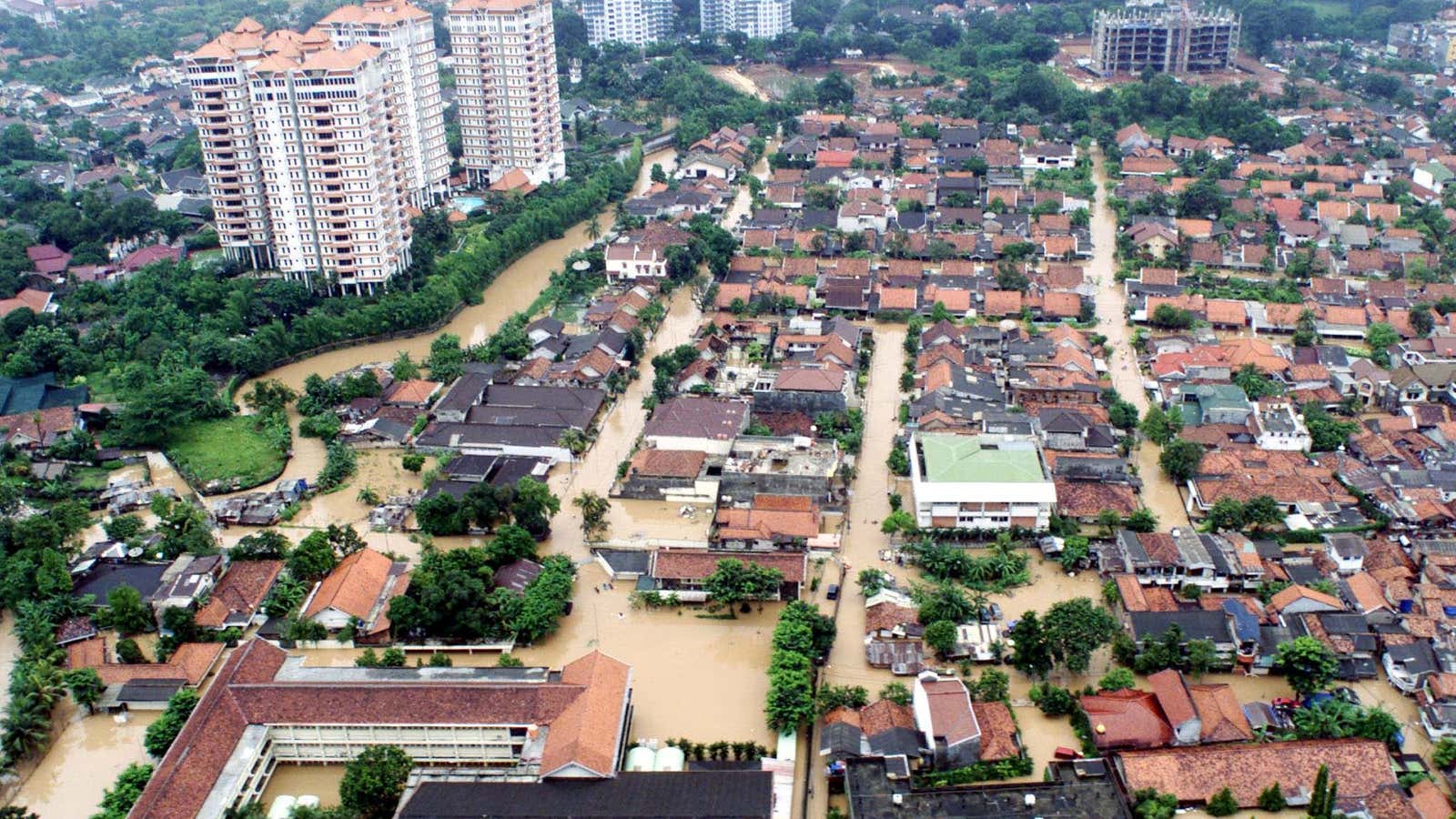Coastal cities like Miami and Guangzhou face the prospect of massive flooding as sea-levels rise. Yet some cities are confronting an even more urgent threat of flooding than one brought on by climate change. A new study of 99 cities around the world published in the journal Geophysical Research Letters, reveals some of the world’s major cities are sinking even faster than the sea levels around them are rising.
In a process called subsidence, land settles and compacts based on changes to materials below the earth’s surface. This subsidence has caused land in the vast majority of these cities to sink by several millimeters per year. Much of this is brought about by human activity such as groundwater pumping. As water flows out, the land compacts, and the structures built on top fall closer to sea level.
At least 33 cities are falling by more than one centimeter per year, five times the rate of sea-level rise, based on recent estimates of global sea-level rise. The fastest-sinking cities, concentrated in South and Southeast Asia, are being forced to adapt. Indonesia, for example, is moving its capital from Jakarta, a megacity of 10.5 million, to a newly constructed city on the island of Borneo, 2,000 km (1,250 mi) away in part because Jakarta is sinking.
All of this has implications for cities’ plans to deal with increased coastal flooding. If subsidence continues at its current rate, researchers warn, flood models that only account for sea-level rise will be insufficient to predict the intensity and speed with which worse floods will come on. Essentially, coastal cities are in for a watery future sooner than current models predict. Plans to floodproof cities in the future will need to involve floodwalls and other types of measures to keep water out, but must also include regulation for the activities that sink cities further into the ground.
Why are cities sinking?
Some areas are prone to a natural amount of subsistence, but in many cities, human activities like groundwater pumping, oil and gas drilling, and rapid construction are accelerating it. Mexico City, built on the clay of ancient lake beds, has been sinking at a rate of nearly 50 centimeters per year after decades of draining the underground aquifers for drinking water.
The authors of this study found that groundwater pumping is a primary cause of subsidence in cities worldwide. In Asian cities with the fastest subsidence, areas with a high concentration of residential buildings or industrial activity tended to sink faster than the surrounding landmass, indicating “excessive” groundwater extraction.
While subsidence can’t be reversed, reducing extraction can at least slow it down. Jakarta has gone from sinking by up to 28 centimeters in a year roughly 30 years ago to three centimeters per year within the last seven years, due in part to tightened regulation from the Indonesian government on extracting groundwater. Earlier in 2022, the local government of North Jakarta issued a ban on groundwater extraction in the region.
A sinking feeling
Cities are already seeing coastal flooding from a combination of subsidence and sea-level rise. Subsidence was fingered as a contributor to the Surfside, Florida condominium collapse in 2021, which killed 98 people. Off the coast of Virginia, an entire town on Tangier Island is sinking under the waves due to erosion and sea-level rise, forcing them to evacuate.
Mumbai, which is sinking at up to 0.8 centimeters per year, faces increasing risk from coastal flooding, as well as inundation flooding from ever-worsening rainfall. Year after year, during monsoon season India’s financial capital finds itself inundated with water that the city’s drainage system is unable to handle. A recent risk analysis named nearly 2,500 buildings in the city that could be damaged by sea-level rise during high tide by the year 2050.
Many of the factors that lead to worsening floods in cities are irreversible. At best, local governments will only be able to adapt through regulation and sometimes, retreat.
